The sunset is brilliant! The colors are spectacular! The sky is filled with the dance of so many colors. You quickly snap some photos to capture the moment, thinking to yourself about how you are going to create a painting to memorialize this moment.
But when you look at the photo, you realize this is not how it looked. The colors are all wrong. And where are all the nuances that made this moment beg to be painted?
While cameras are becoming increasingly sophisticated, they are not as sophisticated as our eyes and our brain. Cameras struggle most in the presence of bright light and dark shadows. They will tend to push the light too light and the dark too dark. This results in our dramatic sunset having blown-out white areas in the sky and black silhouettes.
In addition, the camera tends to distort colors, shifting the scene towards cooler hues. The luscious yellow/orange tones of a sunset our eyes perceive can be depicted as a harsh yellow/green in the photo. And the myriad shades of green of leaves shift to a uniform, flat blue-tinged green.
Regardless of the scene, cameras can have difficulty balancing the extremes of light and shadow and with color accuracy, as is evident in this photo I took of a river on a sunny day. The sky was a brilliant blue, but appears nearly white in the photo. The trees on the left bank are pushed to near-black in the shadows. And the leaves of the trees on the right bank, well, the colors in the photo were just not right.
For those who are tech-savvy, post-processing software can be used to “stack” and combine images to correct the lights and darks. The software can also correct color distortions. But ultimately, the camera will never be able to capture your true experience.
As artists, what are we to do?
First and foremost, we must recognize the limitations of cameras. If we simply copy a reference photo, our painting will convey the value and color distortions that were recorded in the original photo. Awareness is the first step.
The next step is observation. Since our eyes and brain are truly the more sophisticated apparatuses, rely on them. Spend time observing. Analyze what is in front of you. Notice the nuances of color and value. And better yet, pull out your pastels or paints and do a quick color study. Even if it is just making little swatches of color.
You can always use that reference photo as a reminder of the composition. But use your eyes to record those colors that took your breath away.
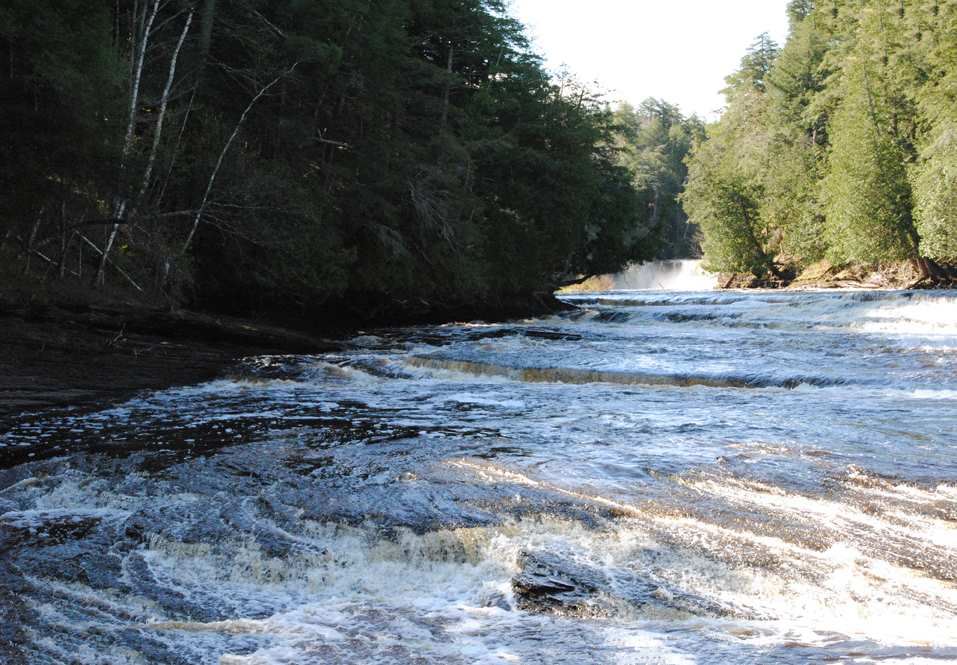
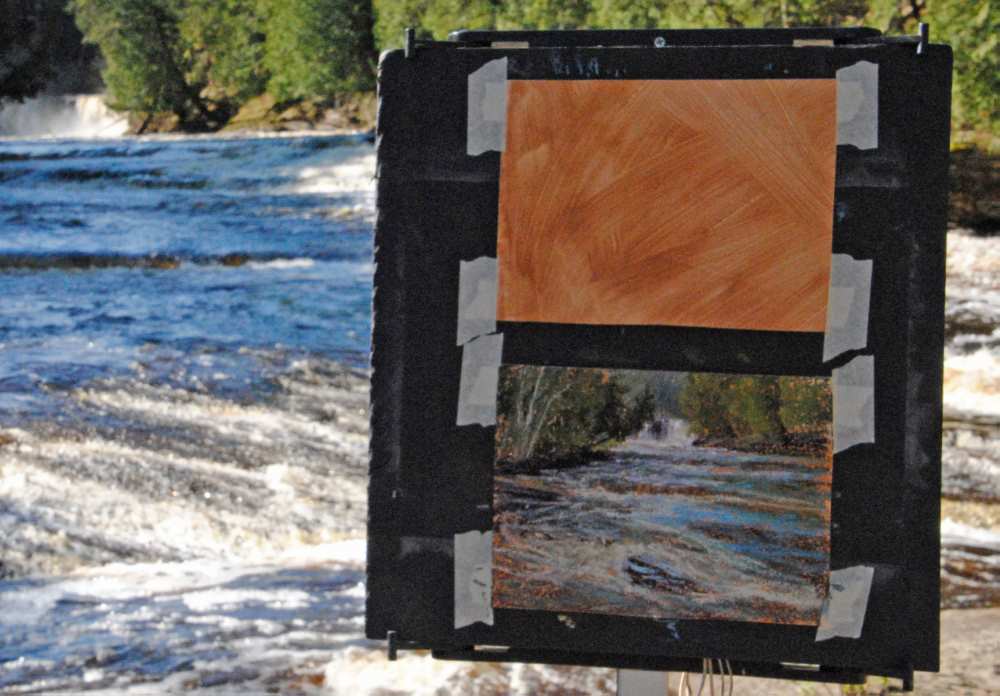
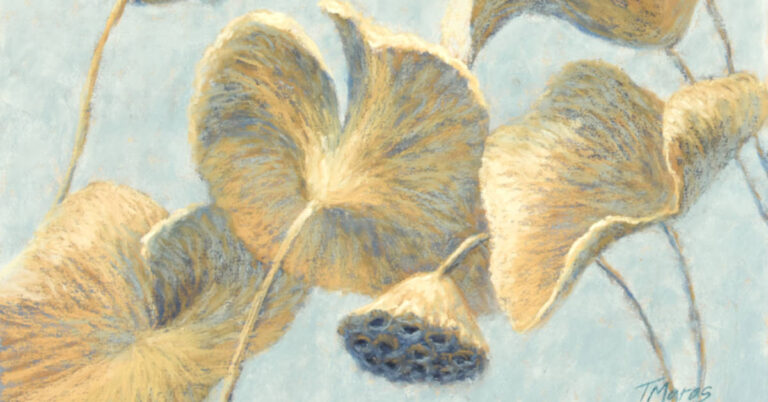
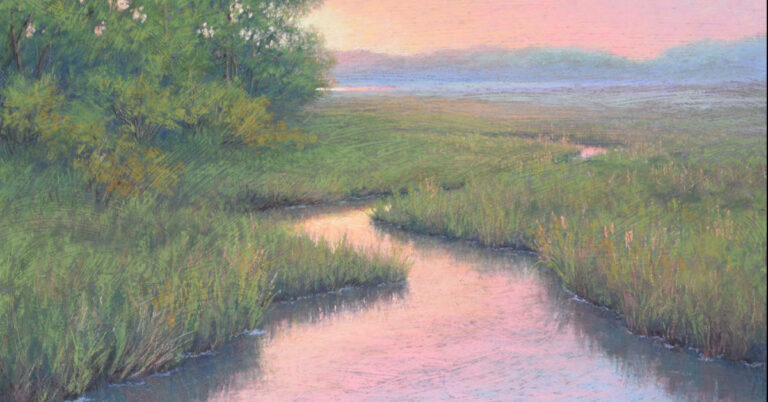
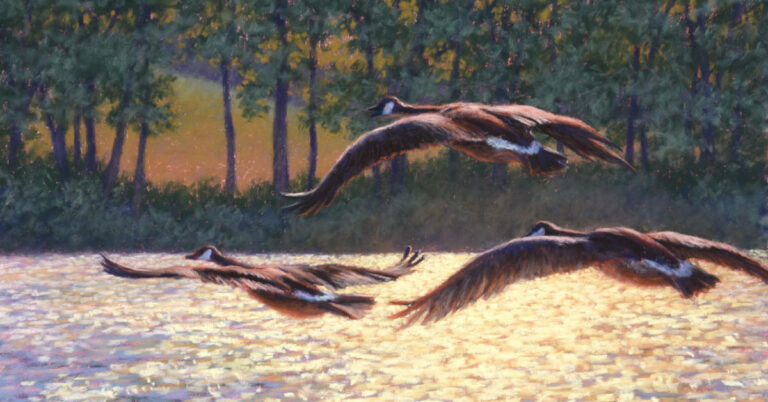
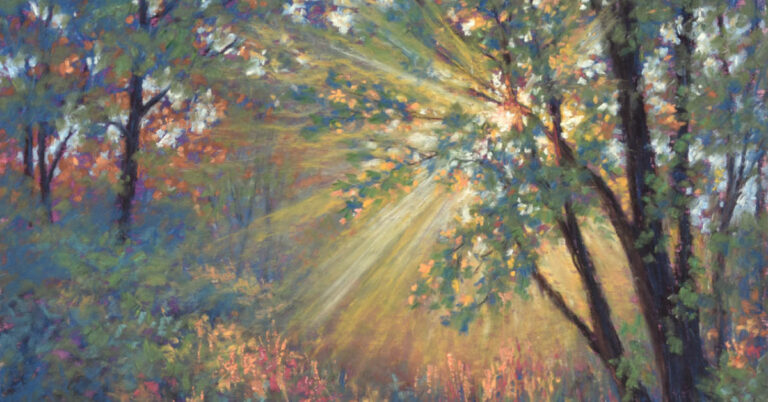
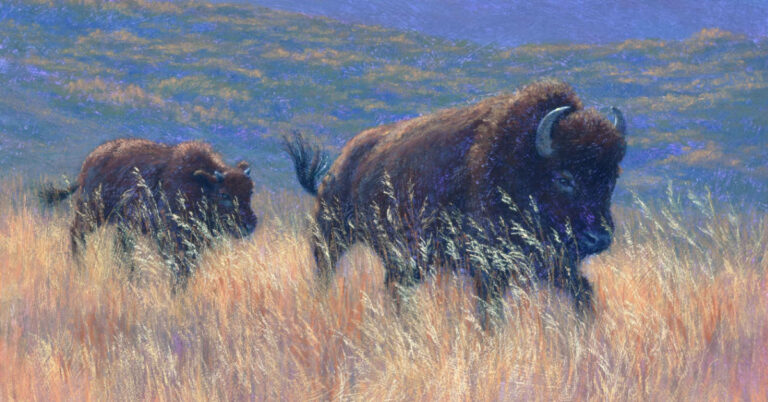
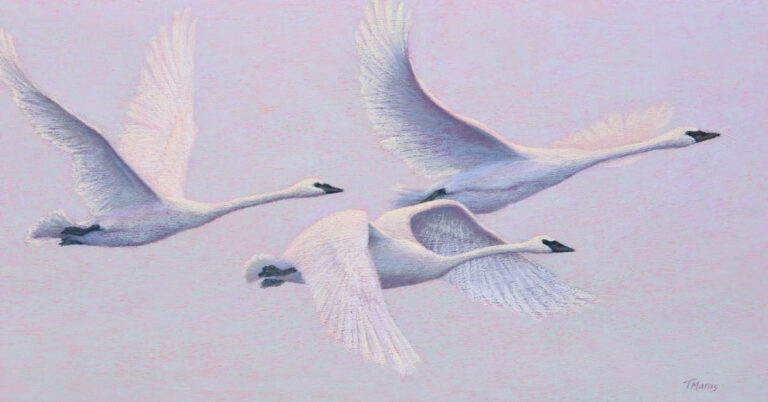
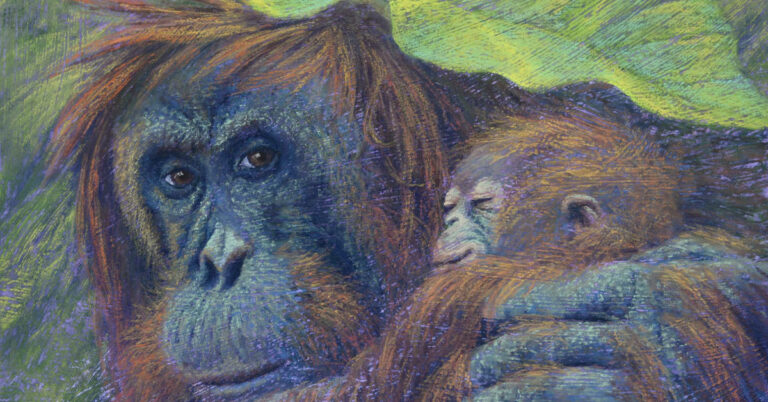
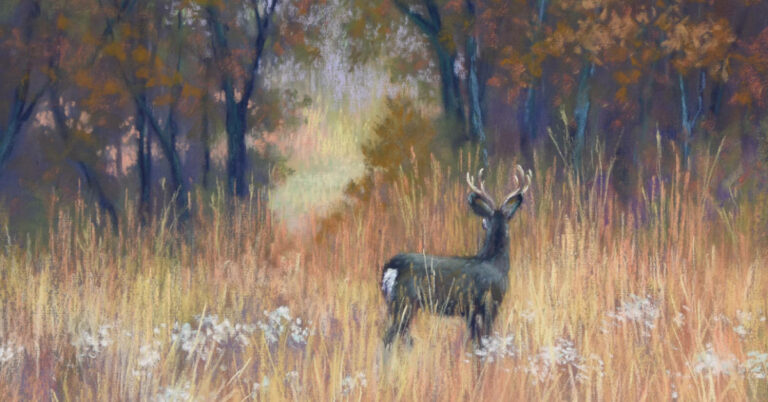
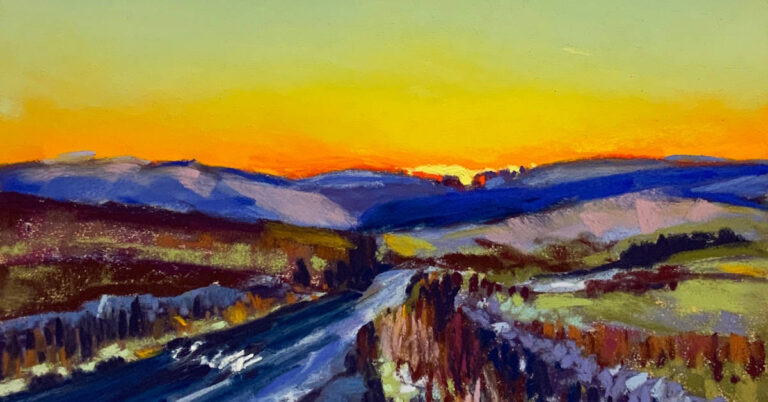
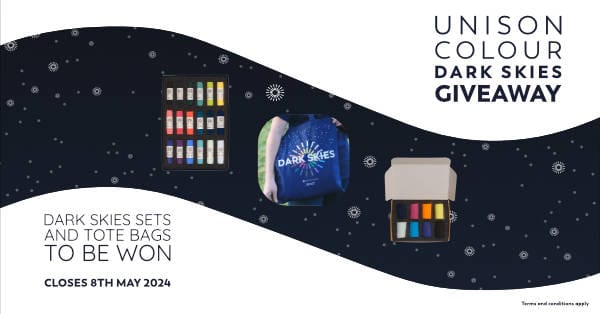
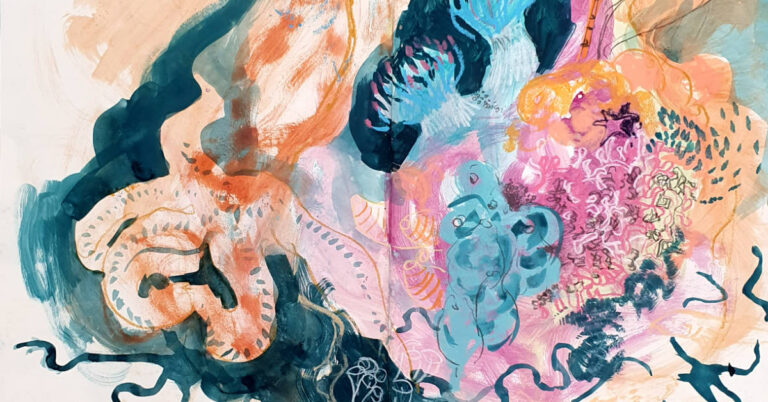
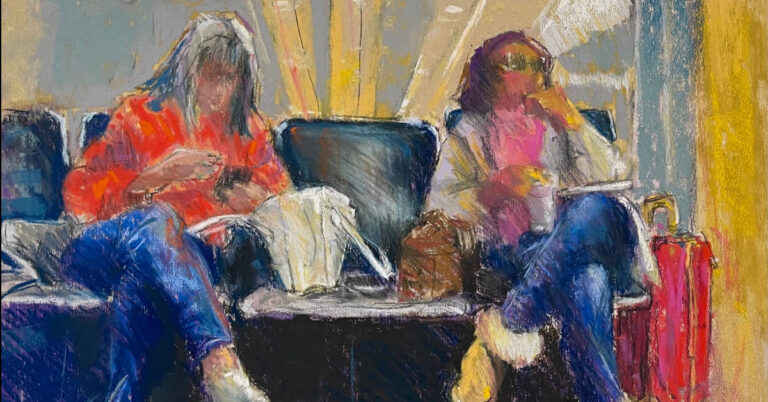
7 Responses
Hi Tracey – you are so exactly right in that. Photos are no good at all for slavish copying – and who wants a painting that just mimics photgraphy? I really don’t like it when people say, ‘that’s amazing, it looks just like a photograph’ – just what you DON’T want to hear! But it’s true that if you rely on photos you end up with too much contrast where you don’t want it, and false colours (in a bad way). I remember walking in the snowy fells one winter evening and the sunlight on the snow was brilliant orange, the shadows were an amazing violet-blue – it was breathtaking. The photos I took, however, came out with the orange light subdued and just dull grey shadows – completely different, and dead in comparison. And I find sunset photos just lose the beautiful pinks and violet colours too, and the oranges can turn toward an acid yellow, just as you said. The great artist Martin Greenland (who paints in oils) does exactly as you – closley observes and memorises everything, perhaps a few sketches in colour, but then paints an imaginary landscape using his memory of closely observed realities. His paintings have stunning realism and a faitfulness to nature, but are NOT ‘just like photgraphs’, or even of actual landscapes. His website is well worth exploring, but his way of painting is described here: https://www.martingreenland.co.uk/john_moores_24/
I really enjoyed reading your post, and looking at your lovely paintings. I haven’t painted recently for lack of time, but you’ve inspired me.
Best wishes,
Ben
Wonderful post, Tracey… I copied the link and posted this on my Facebook page… not realizing until later I could have clicked the icon to share. Apologies to Unison for that. But, it did get shared because I am always talking about how “not” to copy a photograph! Thank you.
Marsha, you made me smile! You are correct, don’t “copy” a photograph…..but go ahead and copy that link. The more the merrier when sharing art ideas! Have a great day!
Ben, I’m really happy you found this blog to be an inspiration. And I hope you are able to carve out some time to paint. At the very least, cherish those moments discovering the colors of brilliant snow, in the shadows, and in those spectacular sunsets and sunrises. By being consciously aware and taking mental notes of what we see before us helps make experiences more memorable. The more senses we engage, more is impressed into our memories. Those memories will be there for you when you are able to return to your art. And thank you for your very kind words!
Thank you Tracey! Lovely words and thoughts.
Ben
(Translated)Dear Tracey, it has given me a lot of pleasure to look at your beautiful works. It’s as good as a mini-holiday! Thank you for showing them to us.
Best regards,
Jutta Reline Zimmermann
(Original)Liebe Tracey, es hat mir viel Freude gemacht, deine wunderschönen Werke zu betrachten. Das tut so gut wie ein Mini-Urlaub! Danke, dass du sie uns zeigst.
Viele liebe Grüße
Jutta Reline Zimmermann
Jutta, thank you so much for such kind words. I’ve not thought of artwork as mini-holidays. But what a wonderful thought! Thank you!
Tracey